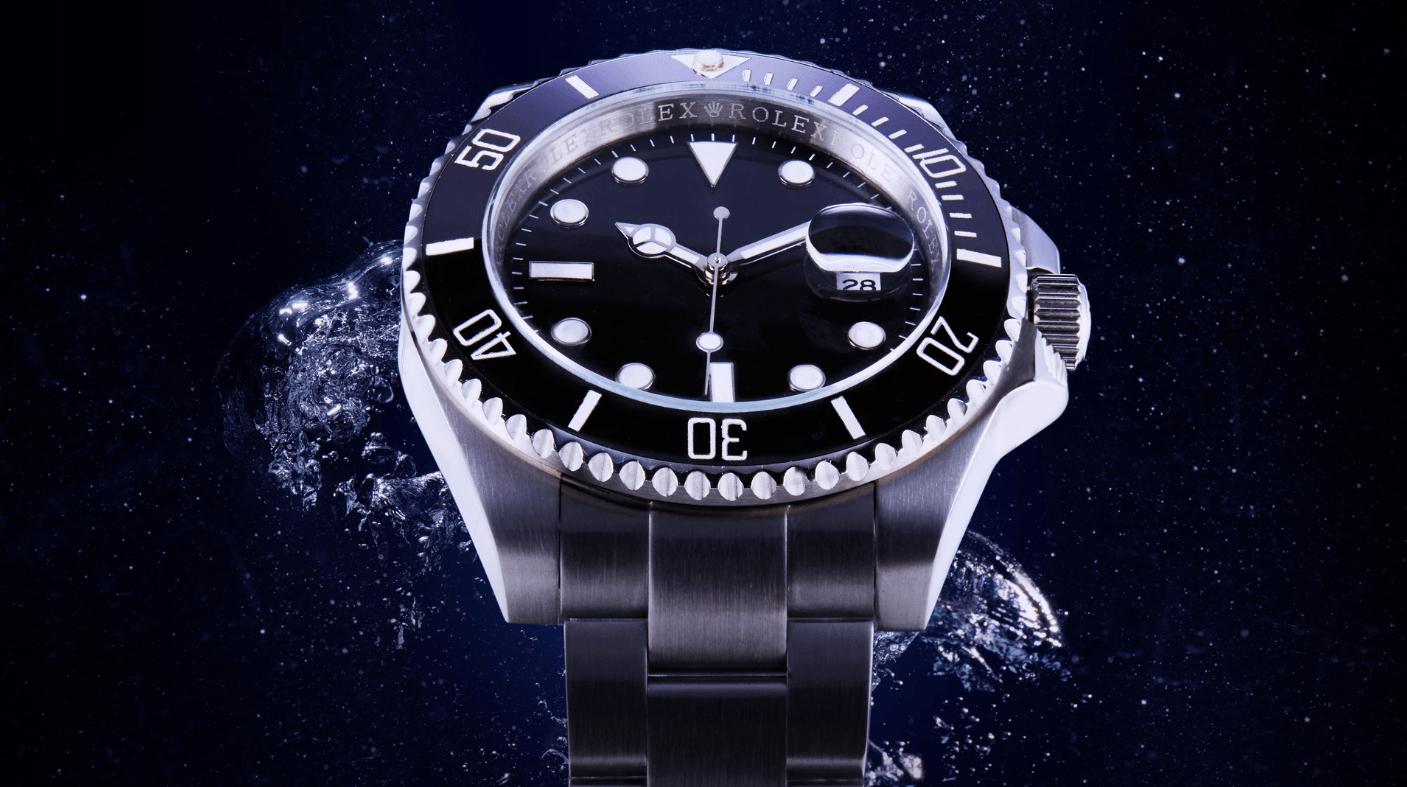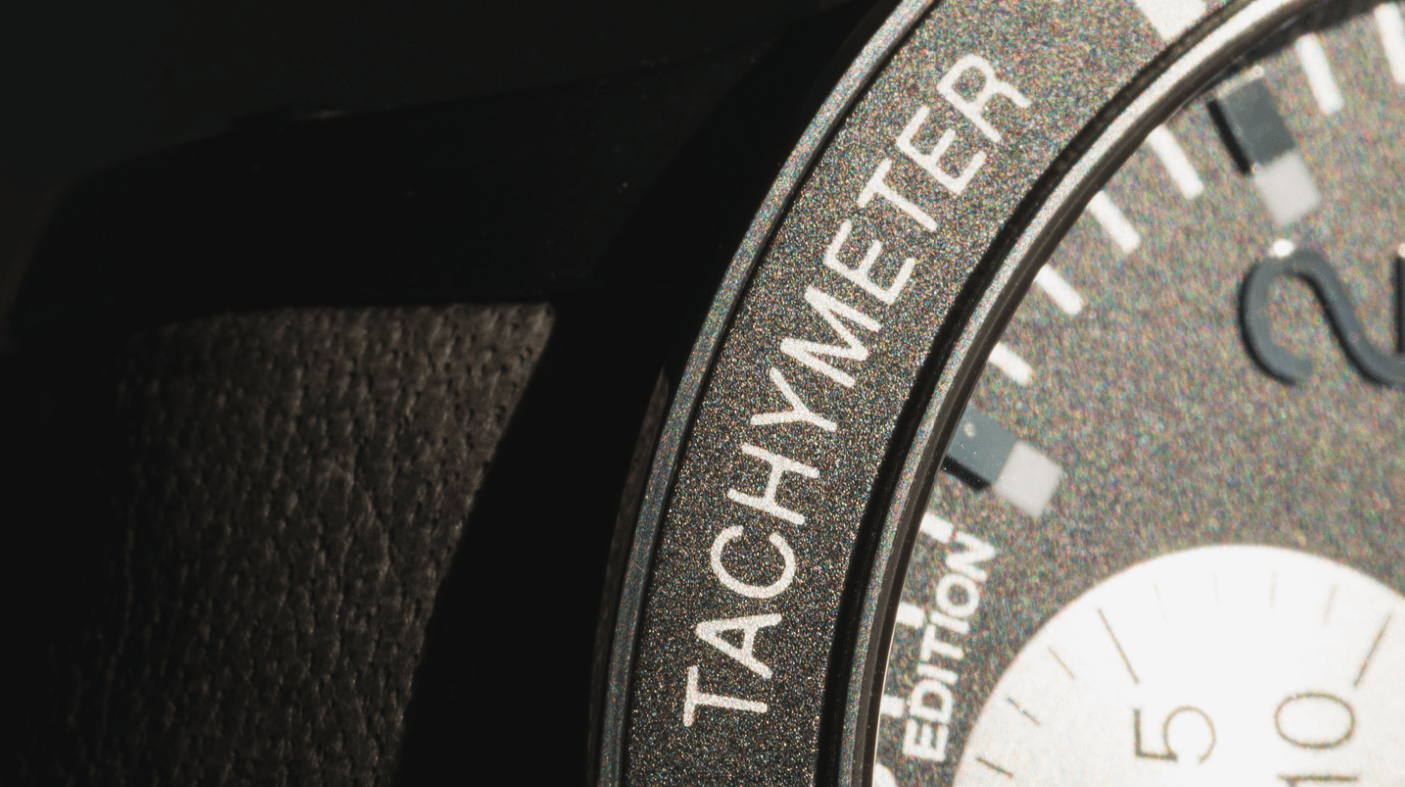With its sleek and eye-catching design, the watch bezel enhances the overall aesthetics of your watch and provides practical functionality.
Want to track elapsed time or measure distance? The watch bezel has got you covered.
Whether diving into the ocean’s depths or simply making a fashion statement, the watch bezel is an essential accessory that elevates your watch-wearing experience.
Types of Watch Bezels
Rotating Bezel

The rotating bezel is a popular feature found in many dive watches. It is typically unidirectional and allows you to track elapsed time underwater.
The bezel can be rotated to align with the minute hand, visually indicating how much time has passed.
This functionality is crucial for divers who need to accurately monitor their oxygen levels and decompression stops.
One key advantage of a rotating bezel is its simplicity. No complex mechanisms are involved, making it reliable and easy to use.
The bezel is often marked with luminous indices or numerals, ensuring visibility even in low-light conditions.
The renowned watch brands known for rotating bezels include Rolex, Omega, and Tag Heuer.
These brands have incorporated this feature into their dive watch collections, emphasizing durability and precision.
Tachymeter Bezel
 The tachymeter bezel is commonly found on chronograph watches. It measures speed based on time and distance covered.
The tachymeter bezel is commonly found on chronograph watches. It measures speed based on time and distance covered.
You can then read the corresponding speed on the tachymeter scale using the chronograph function to time a specific distance traveled.
This bezel adds a functional element to the watch design while enhancing its sporty aesthetic.
The tachymeter scale is often engraved or printed on the inner rim of the bezel, allowing for quick and accurate calculations.
Popular watch brands such as Rolex Daytona, TAG Heuer Carrera, and Breitling Navitimer are known for incorporating tachymeter bezels into their chronograph models.
These watches are favored by motorsport enthusiasts who appreciate both style and functionality.
Functions of a Watch Bezel
Tracking Elapsed Time
A watch bezel serves several important functions that enhance the usability of your timepiece. One of its primary purposes is to track elapsed time.
By rotating the bezel to align with the minute or second hand, you can easily measure the duration of an event or activity.
This feature is particularly useful for divers who need to keep track of their time underwater or athletes who need to time their workouts.
The bezel allows you to monitor elapsed time without resetting the watch’s main hands, providing convenience and accuracy.
Measuring Distances
A watch bezel can also measure distances in addition to tracking time. Some bezels are designed with specific scales that allow you to calculate distances based on known speeds or travel times.
For example, if you know your average hiking speed, you can use the bezel to estimate the distance covered by aligning it with the travel time.
This functionality is valuable for outdoor enthusiasts, hikers, and adventurers who want a quick and reliable way to gauge distances without relying on additional tools.
Acting as a Compass
Another remarkable feature of certain watch bezels is their ability to act as a compass.
These specialized bezels are often equipped with directional markers, or compass rose symbols that help you determine your heading in relation to magnetic north.
By aligning the bezel’s marker with the hour hand on your watch, you can find your bearing even in unfamiliar terrain or when traditional compasses are unavailable.
This function is highly beneficial for outdoor activities such as camping, hiking, or navigating remote areas.
Importance in Outdoor and Professional Settings
The functionality of a watch bezel makes it indispensable in various outdoor and professional settings.
Whether you’re an avid diver exploring underwater depths, an athlete striving for precise timing, or an adventurer relying on accurate measurements and navigation, a well-designed watch bezel enhances your overall experience and performance.
Its versatility and practicality make it an essential tool for those who value precision, reliability, and convenience in their timekeeping instruments.
Materials Used in Bezel Construction
Stainless Steel
Stainless steel is a popular material for crafting watch bezels. It offers excellent durability and is resistant to scratches and corrosion.
This means your watch bezel will maintain its sleek appearance even after years of wear.
Stainless steel also provides a modern and versatile aesthetic for casual and formal occasions. It requires minimal maintenance, making it a convenient choice for everyday use.
Ceramic
Ceramic bezels are known for their exceptional hardness and scratch resistance. They are highly durable and can withstand the test of time.
Ceramic bezels also offer a luxurious and elegant look, adding sophistication to your timepiece.
The material is available in various colors, allowing you to choose one that complements your style.
However, if subjected to significant impact, ceramic bezels may be more prone to shattering or cracking.
Titanium
Titanium is a lightweight yet robust material commonly used in high-end watch bezels.
It is renowned for its strength and resistance to corrosion, making it an ideal choice for outdoor enthusiasts or individuals with an active lifestyle.
Titanium bezels offer a unique blend of durability and comfort. They are lighter than stainless steel but still provide excellent protection for the watch face.
Precious Metals
Precious metals like gold or platinum are often used to craft watch bezels for those seeking luxury and opulence.
These materials exude elegance and prestige, elevating the overall design of the timepiece.
Precious metal bezels require regular maintenance to prevent tarnishing or scratching due to their soft nature.
The choice of material for your watch bezel depends on your preferences regarding durability, aesthetics, and budget.
When selecting the right material for your timepiece, consider the watch’s intended use and your personal style.
How to Use a Rotating Bezel
Unidirectional and Bi-directional Bezels
When using a rotating bezel on your watch, understanding the different types is essential.
There are two main types: unidirectional and bi-directional bezels.
The unidirectional bezel is designed to rotate in one direction only, usually counterclockwise.
This feature is especially useful for activities that require timing, such as diving or tracking elapsed time.
Aligning the zero marker with the minute hand before starting an activity makes it easy to keep track of elapsed time by reading the minute hand’s position against the bezel’s markings.
On the other hand, bi-directional bezels can be rotated in both directions.
These bezels are commonly found in watches used for aviation or travel purposes. They allow you to set a reference point by aligning it with the hour or minute hand.
This enables you to track a second-time zone or calculate elapsed time in either direction.
Steps to Use a Rotating Bezel
Using a rotating bezel effectively requires following a few simple steps:
- Identify the purpose: Determine why you need to use the rotating bezel. Whether it’s measuring elapsed time, tracking a second-time zone, or any other specific function, knowing your purpose will guide you throughout the process.
- Set the zero marker: For unidirectional bezels, align the zero marker with the minute hand before starting your activity. For bi-directional bezels, align them with the hour or minute hand, depending on your intended use.
- Monitor elapsed time: As you engage in your activity, regularly check the position of the minute hand against the bezel’s markings to track elapsed time accurately.
- Calibrate if necessary: If you notice discrepancies between your watch’s timekeeping and external references, consider calibrating your rotating bezel. Follow the manufacturer’s instructions or seek professional assistance to ensure accurate timekeeping.
- Resetting the bezel: After completing your activity, reset the bezel by aligning the zero marker with the minute hand again. This prepares it for future use and ensures accuracy for subsequent timing needs.
With these simple steps, you can maximize your watch’s rotating bezel and use its functionality for various activities.
Caring for Your Watch Bezel
Cleaning Methods
Regular cleaning is essential to maintain the appearance and functionality of your watch bezel. Start by removing dirt or debris from the surface using a soft, lint-free cloth.
Dampen the cloth with mild, soapy water and gently wipe the bezel in a circular motion. Avoid using harsh chemicals or abrasive cleaners, as they can damage the finish of your bezel.
Once cleaned, use a dry cloth to remove excess moisture and ensure a streak-free shine.
Protection Against Scratches
Preventing scratches on your watch bezel is crucial for its longevity.
Consider investing in a protective cover or guard designed for your watch model. These accessories provide an extra layer of protection against accidental bumps and scratches.
Avoid wearing your watch during activities that may expose it to potential damage, such as sports or heavy manual work.
Avoiding Damage During Daily Wear
When wearing your watch daily, there are several precautions you can take to prevent damage to the bezel.
First, avoid exposing your watch to extreme temperatures, as sudden changes in temperature can cause the metal to expand or contract, leading to potential damage.
Furthermore, be mindful of any impact or contact with hard surfaces that may result in dents or scratches.
Lastly, if your watch features a rotating bezel, handle it carefully and avoid applying excessive force when turning it.
Regular Maintenance Is Key
Maintaining your watch bezel’s condition requires regular maintenance.
Schedule periodic visits to a professional watchmaker who can inspect and service your timepiece. They will ensure that all components function correctly and address any issues before they worsen.
By taking these proactive measures, you can extend the lifespan of your watch bezel and enjoy its pristine appearance for years to come.
